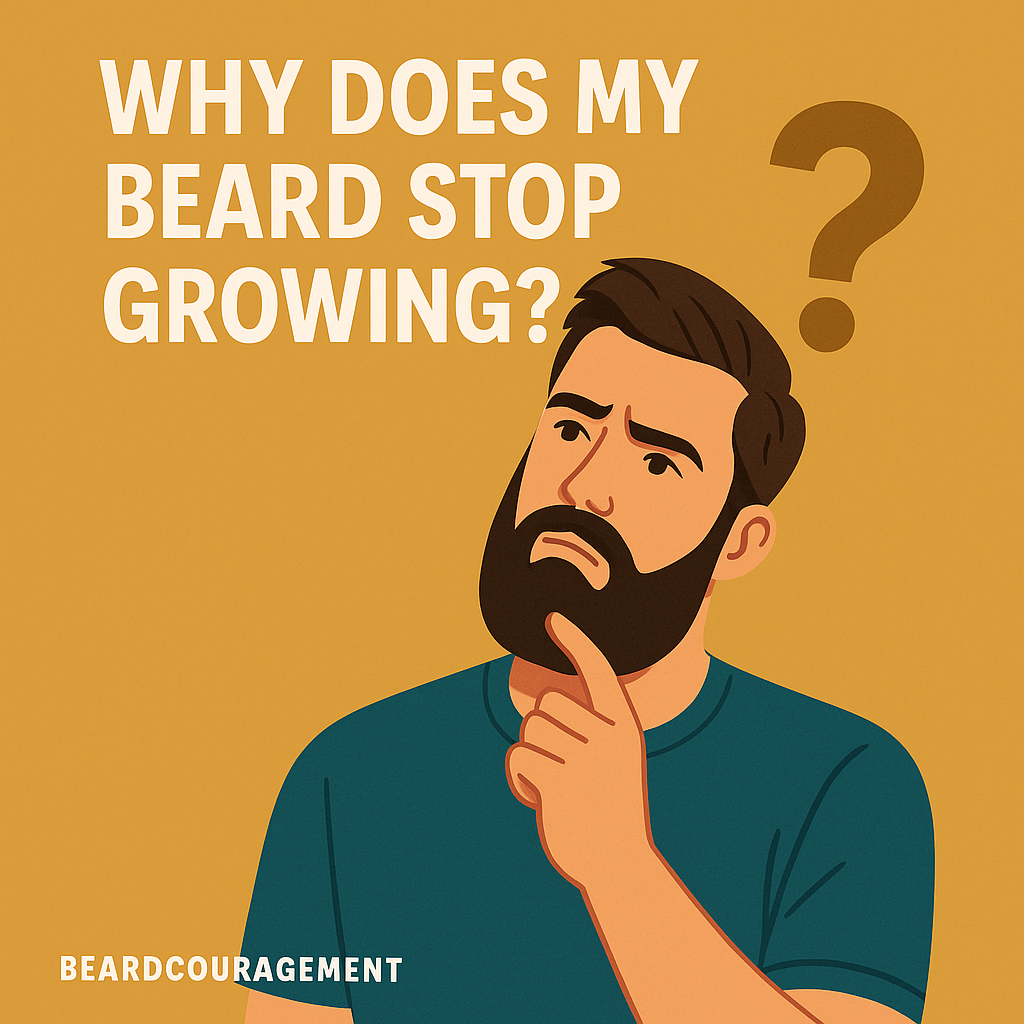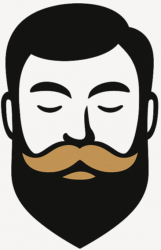
Every man dreams of growing a thick, full beard—but at some point, it can feel like your beard just… stops. Maybe it’s stalling at a certain length, or patchy areas aren’t filling in no matter what you try. The truth is, beard growth often slows or pauses due to a combination of biology, habits, and environment—not because your body “gave up.”
Let’s break down the real reasons your beard stops growing and what you can do about it.
1. Your Beard Reached Its Terminal Length
Every hair on your body has a growth cycle, which includes three phases:
- Anagen (growth phase): Hair actively grows.
- Catagen (transition phase): Growth slows down.
- Telogen (resting phase): Hair eventually sheds and starts over.
Each person’s hair has a genetically determined terminal length—the longest it can grow before shedding. For some men, that might be six inches; for others, it could be two feet.
If your beard has been the same length for months despite no trimming, it may have simply reached its natural limit. Don’t worry—this doesn’t mean your beard is unhealthy; it just means your genetics set the boundary.
What to do: Focus on maintaining health and thickness. Trim split ends, keep your beard moisturized, and support growth from within through nutrition.
2. Genetics and Hormones Play a Huge Role
Just like head hair, beard growth depends largely on genetics and hormones—especially testosterone and dihydrotestosterone (DHT). These hormones stimulate beard follicles to produce thicker, darker hair.
If your father, uncles, or grandfathers had patchy or slow-growing beards, your facial hair pattern is likely similar. However, genetics aren’t the end of the story—you can still optimize growth potential.
What to do:
- Get regular exercise to support testosterone levels.
- Eat foods rich in zinc, magnesium, and vitamin D.
- Prioritize sleep—testosterone spikes during deep rest.
Consistency with lifestyle habits can make a noticeable difference over time.
3. Poor Nutrition or Deficiency
Your beard is made of keratin, a protein that relies on nutrients like biotin, B vitamins, and iron for strength and growth. Without proper nutrition, your beard may appear dull, thin, or even stop progressing.
What to do:
- Add high-protein foods (eggs, fish, nuts, and beans).
- Take a multivitamin or beard growth supplement if needed.
- Stay hydrated—dehydration slows down the cellular activity that drives hair growth.
4. Lack of Proper Beard Care
Neglecting your grooming routine can stunt growth. Dead skin cells, clogged pores, or dryness beneath the beard can suffocate follicles and block new growth.
What to do:
- Wash your beard 2–3 times per week with a beard wash.
- Apply beard oil daily to moisturize and nourish follicles.
- Gently brush or massage your beard to stimulate circulation.
A healthy environment for your follicles keeps growth consistent and prevents breakage that makes your beard appear stuck.
5. Breakage Can Mimic “Stopped” Growth
Sometimes your beard is growing—but breakage makes it seem like it’s not. Dryness, over-brushing, or heat styling can cause ends to snap off before new growth adds noticeable length.
What to do:
- Avoid over-washing or using harsh shampoos.
- Trim split ends regularly to encourage healthy regrowth.
- Apply a few drops of oil or balm daily to prevent brittleness.
When your beard feels softer and stronger, you’ll notice it maintaining more length over time.
6. Stress and Lifestyle Factors
Chronic stress, lack of sleep, and poor recovery can affect hormone levels and hair cycles. Cortisol—the stress hormone—can restrict blood flow and nutrient delivery to follicles, slowing or halting growth temporarily.
What to do:
- Prioritize relaxation: meditation, deep breathing, or short walks help.
- Exercise regularly to balance hormones and reduce tension.
- Maintain consistent sleep patterns—your beard grows most while you rest.
Reducing stress doesn’t just improve growth—it also improves beard texture and density.
7. Medical or Skin Conditions
Conditions like alopecia areata, fungal infections, or hormonal imbalances (such as thyroid issues) can cause uneven beard growth or slow regrowth. If your beard stops growing in specific patches or falls out suddenly, it may be a medical issue.
What to do: Consult a dermatologist or healthcare provider to rule out underlying causes. Early treatment can prevent further follicle damage.
Final Thoughts
When your beard stops growing, it’s rarely permanent—it’s usually your body’s way of saying something needs attention. Genetics set the foundation, but your habits, health, and care determine how fully that potential is realized.
So, before giving up on your growth journey, reassess your grooming routine, diet, and stress levels. With patience and consistency, your beard can return to its natural rhythm—and possibly exceed where it left off.
